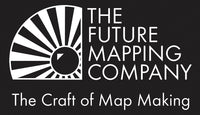British Isles Re-Print
We've just re-printed our ever popular map of the British Isles. Below you will find a look behind the scenes of the lithographic process we use to print our maps.



Lithographic printing is much like a mechanised version of a traditional screen print. Screens are produced for each colour, in this case 5 and then printed one at a time until the image is complete.
Why we love this process is because you can use special inks like metallics or fluoros unlike a standard digital print. This gives our maps real impact and a quality that really cannot be beaten.
That said it does certainly become more of a craft and requires much experience and skill to get the perfect print. From preparing the artwork so all the layers of data show correctly, to knowing which colour ink to print first to getting the registration of each layer of ink to match perfectly you are constantly having to think one step ahead.


Having printed the map we allow it to dry for a few days before putting the map back through the machine and printing a water based sealer over the top of the full extent of the map. This acts as a basic entry level of protector for the map, not only allowing the end customer to very gently wipe it down but it also stops potential smudging of the inks. This is because special inks, particularly metallics never actually fully dry so this stops there being any mishaps.
The maps are then sent to a finisher, who screens prints a gloss varnish to the land-masses. We do this to add an amount of surface decoration to the print. Light plays off the gloss to dramatic effect and it contrasts well with the metallic ink of the seas.

Once we get the map back into the studio we plasticise some of them and mount others onto a magnetic backing before framing or selling as prints.



